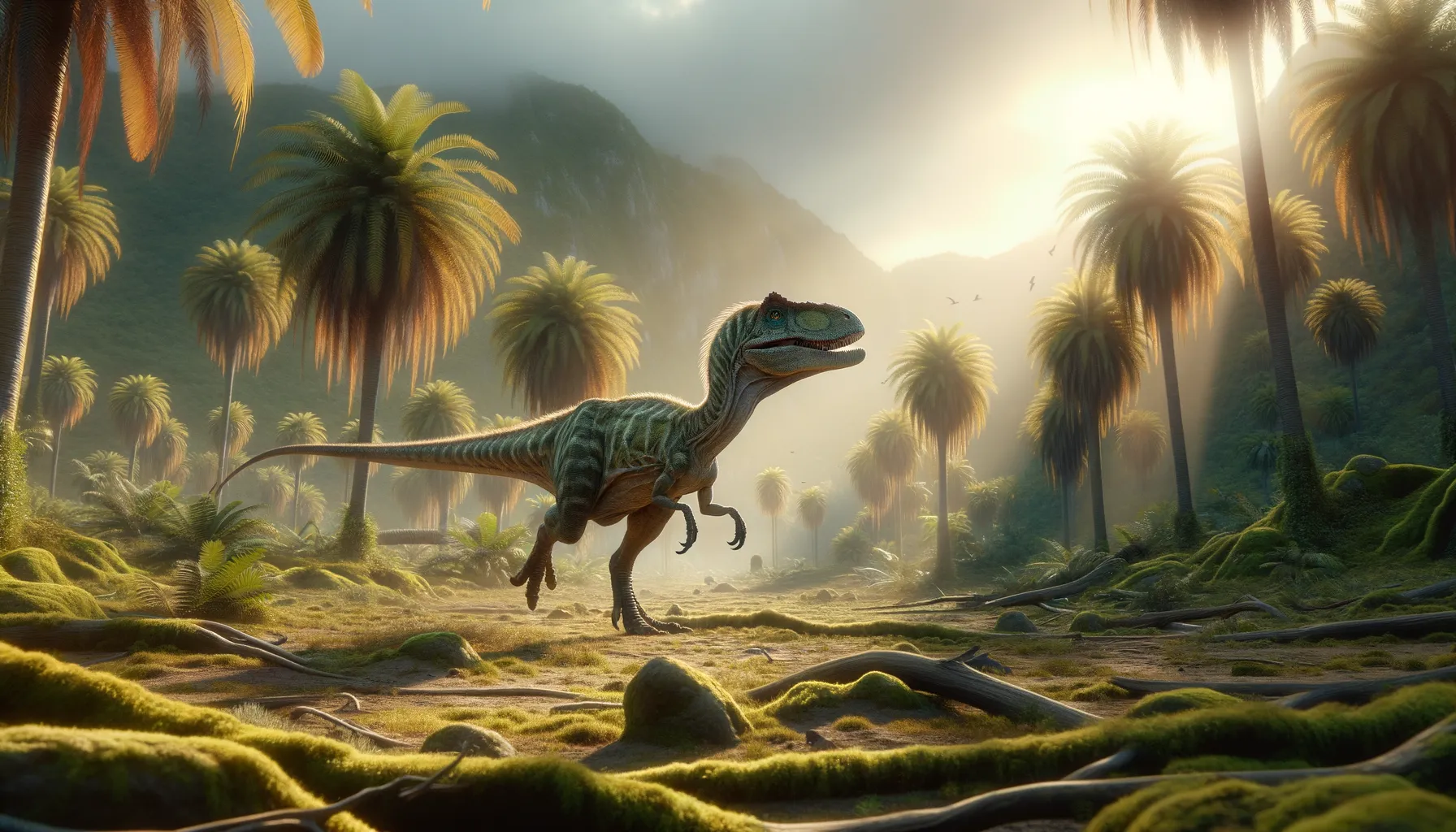
Itemirus
Swift and stealthy predator of the ancient lands.
Period
Cretaceous
Length
Roughly 2 meters long.
Height
Around 1 meter at the hip.
Weight
Approximately 20 to 30 kilograms.
Itemirus was a small, agile theropod dinosaur that roamed the Earth during the Late Cretaceous period. It is known from fragmentary remains but is thought to have been a nimble predator. Its keen senses and light build would have made it an adept hunter in its environment. Though not the largest of theropods, its adaptability likely played a vital role in its survival.
Diet
Itemirus was carnivorous, likely preying on small vertebrates. Its small frame suggests it focused on nimble, quick catches, potentially including reptiles and small mammals of its time.
Hunting
Itemirus may have relied on stealth and agility for hunting. It likely targeted smaller prey, utilizing ambush techniques due to its size and speed advantages.
Environmental challenges
Surviving in the diverse landscapes of the Late Cretaceous meant facing fluctuating climates and volcanic activity. Competition from larger predators was significant, requiring Itemirus to develop effective strategies to avoid conflicts. Food scarcity during harsh seasons would have tested its survival skills.
Speed
Likely moderate, suitable for agile pursuits.
Lifespan
Estimated to be around 20 to 30 years.
First discovery
First discovered in Uzbekistan in 1969.
Fun Facts
- Itemirus was a small carnivorous dinosaur that lived during the Late Cretaceous period.
- This dinosaur was named after the place where its remains were discovered, the Imeni Lenina region in Uzbekistan.
- Itemirus is known primarily from a partial skull, which makes it one of the lesser-known theropods.
- It is believed that Itemirus was a distant relative of more famous theropods like Tyrannosaurus and Velociraptor.
- The specific structure of its skull suggests that Itemirus might have had a keen sense of smell, useful for hunting prey.
- Itemirus adds important insights into the diversity of theropods in Central Asia during the Late Cretaceous.
- Despite its small size, Itemirus likely played a significant role in its ecosystem as a predator.
Growth and Development
Itemirus likely grew rapidly during the early stages of its life, reaching maturity quickly to increase survival chances. Juveniles may have exhibited different coloration for camouflage purposes, assisting in avoiding predators until adulthood. Development rates were potentially influenced by environmental conditions and food availability.
Habitat
Itemirus inhabited what is now Central Asia's river valleys and floodplains. This region offered a mosaic of environments, from lush vegetation along watercourses to open areas ideal for hunting. Variation in terrain required adaptability, shaping its physical and behavioral characteristics for survival.
Interaction with other species
Itemirus likely interacted with various contemporaneous species, competing for resources such as food and territory. It may have played a role in controlling smaller vertebrate populations. Occasional confrontations with larger predators might have occurred, driving adaptive behavior changes.
Natural lifespan
Its natural lifespan was likely dictated by environmental pressures and predation.
Reproduction
Itemirus likely laid eggs in covered nests, possibly hidden in vegetation. Parental care might have been minimal, with young relying on instinct and speed early on. Nesting sites would have been strategically chosen for safety and proximity to food sources.
Social behaviour
Although primarily solitary, Itemirus might have formed temporary groups during breeding seasons. Interactions with conspecifics were likely limited to mating or territorial disputes. Communication could have included visual displays or vocalizations.
Fossil locations
Fossils of Itemirus have been primarily found in Uzbekistan's Bissekty Formation. These discoveries offer insight into its existence and environment. Fragmentary remains are constantly updated as new findings emerge, contributing to a clearer understanding of this theropod.
